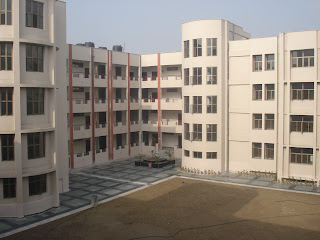Non Aligned Movement- Is it Still relevant?
Many scholars and students are asked whether Non Aligned Movement is still relevant after the end of cold war.
The Non-Aligned Movement (NAM) is an intergovernmental organization of states considering themselves not aligned formally with or against any major power bloc. Because the Non-aligned movement was formed as an attempt to prevent the cold war from increasing, it has struggled to find relevance since the cold war ended. Originally as projected in India’s foreign policy, non-alignment implied a country not joining any of the cold war power alignments while trying to maintain friendly relations with all kinds of nations and helping the preservation of world peace.
On the surface it does seem logical that with the disappearance of bloc divisions and rivalry between the two nuclear super powers, there was no longer any reason for countries wishing to stay away from these divisions to remain together hence the relevance of non-aligned movement.
Now, it is alleged that during its decades of existence non-alignment has proved to be ineffective. However, at the same time NAM maintained its regular schedule of periodic summit meetings, while increasing its number of member countries. The steadily growing memberships of NAM eliminate all doubts as to the relevance of it.
From a primarily political strategy against imperialism and colonialism individually and collectively followed by the new states, NAM has transformed itself fundamentally into a collective economic movement of the third world countries, entered forcefully into the north-south economic confrontation and sphere headed the demand and the struggle for a New International Economic Order (NIEO) based on equality and justice.
Today, the whole international system itself is in a state of crisis and the cohesions - political, economic, social, cultural and otherwise which have held it together are coming unstuck at an alarming rate. The fact of the paradigm shift is that the global strategic situation continues to be dominated by the United States. It shows a greater inclination to stimulate, encourage and control conflicts in the third world to serve its own strategic goals. Consequently military interventions and exertion of direct and indirect pressures by the super power have significantly increased. The United States has seemingly arrogated to itself the role of policing the world as it was articulated by in its policy of new world order.
The movement continues to see a role for itself, as in its view, the world’s poorest nations remain exploited and marginalized, no longer by opposing superpowers, but rather in a unipolar world, and it is western hegemony and neocolonialism that that the movement has really re-aligned itself against.
The fact is that the collapse of the bi-polar system and emergence of unipolarity in political, economic and military terms is leading to further inequality and injustice and hence, the role of non-alignment becomes much more important as a counterforce to unilateral military and economic coercion.
In the present context of the collapse of eastern bloc led by soviet union and the consequent globalizing capitalism and neo-imperialism the notion of non-alignment appears more problematic. However the movement constitutes an integral part of the profound changes in the structure of contemporary international relations. The only way to strengthen the role of non-aligned movement as the greatest independent and biggest peace movement in the world is to reinforce the non-aligned countries unity. The basis of such an approach can be cited in the idea of democratization of international relations as an imperative necessity of our times, which will lead to the realization of the unfettered development and genuine independence of all states. Democracy then requires the collective public regulation of these activities responsible for our social reproduction, which in most parts of the world are currently affected through the capitalist market.
This means that the uni-dimensional and unipolar versions of the new international system need to be contested by the NAM as a whole.
Unity and solidarity among the Non-Aligned countries are all the more necessary in the present crisis in international relations. In the new situation with issues of military occupations, human rights, new dimensions of north-south conflicts, restructuring of the united nations and nuclear disarmament, it falls on the NAM to survive meaningfully and not just ceremonially as a movement. This would require a newer unifying rationale to strengthen the united nations to ensure security of smaller states, to settle disputes among the member states and to defeat the neo-con ambitions globally.

